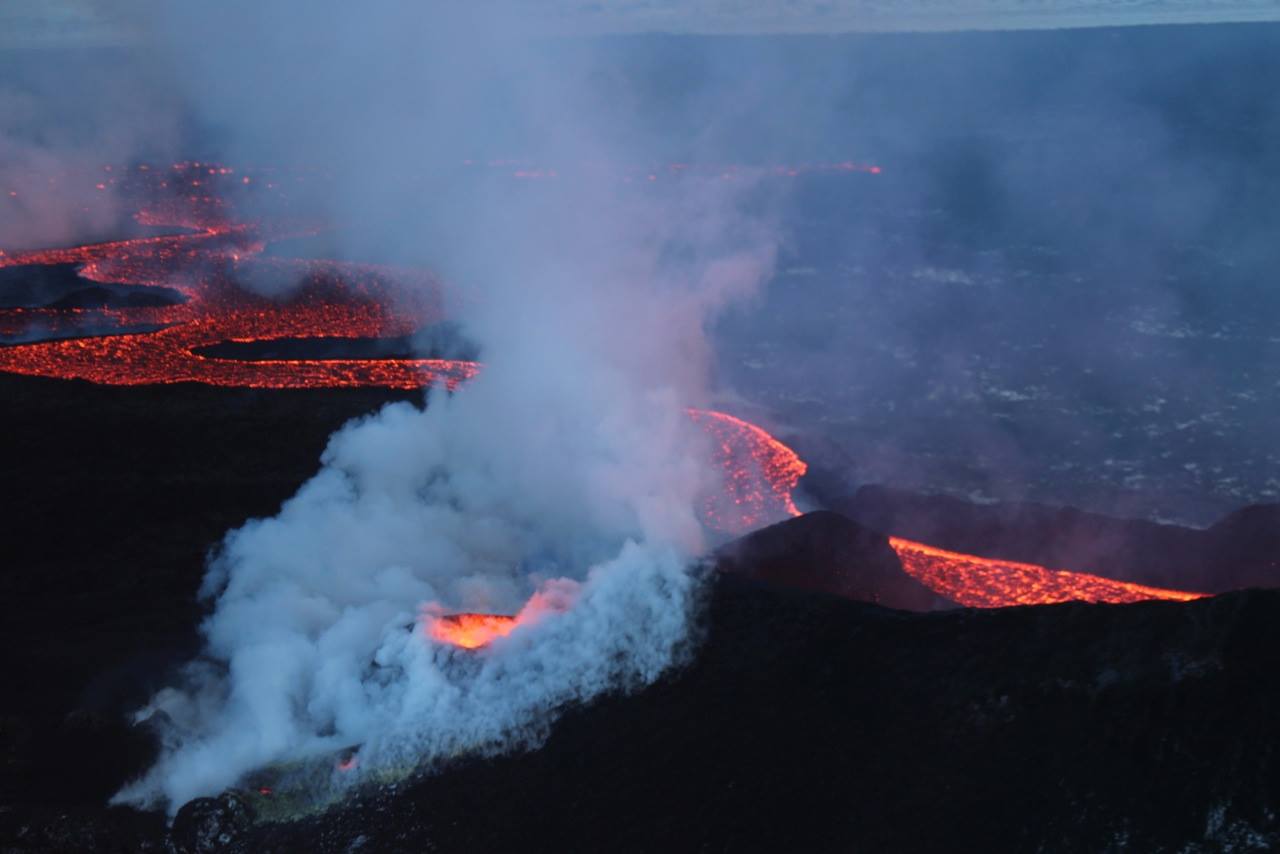An Oxford University collaboration has found previously undetected health risks contained in the boomerang-like return of an Icelandic volcanic plume.
The new study, published in Earth and Planetary Science Letters, traced the evolution of the plume chemistry from the 2014-2015 Icelandic Holuhraun lava field eruption and found an unreported secondary (older) plume that had significant impact on air quality.
Health warnings in Iceland focused on the primary plume but did not mention the older secondary plume. Flying unnoticed, this plume had matured and circled back to Icelandic cities and towns long after the initial alert had been lifted.
Analysis of the secondary plume, which the team dubbed a ‘plumerang’, showed that the time spent in the atmosphere had turned volcanic sulphur in the plume from gas into particles. This conversion meant that the sulphur dioxide (SO2) levels of the ‘plumerang’ were significantly reduced and technically within European Commission air quality standards. As a result, no health advisory messages were deemed necessary.
We spoke to people living in Reykjavik who described a burning sensation in the throat and eyes when the SO2 levels would have been well within air quality standards, but the particle-rich ‘plumerang’ would have been over the city.
Lead author, Dr Ilyinskaya, from the Leeds University Institute of Geophysics and Tectonics
The findings revealed, however, that although the sulphur dioxide levels of the ‘plumerang’ were technically acceptable, the particles were small enough to penetrate deep into the lungs. Sulphur in this small particle form remains the single largest environmental health risk in Europe. Exposure to it could potentially cause serious human health problems, and exacerbate long term conditions such as asthma.
It is estimated that whether human-made or from natural sources, short and long-term exposure to such particles, causes over three million premature deaths per year, worldwide.
Lead author, Dr Ilyinskaya, from the Leeds University Institute of Geophysics and Tectonics, said: ‘our samples showed that the mature plume was very rich in fine particles which contained high concentrations of sulphuric acid and trace metals. The concentrations of these trace metals did not reduce as the plume matured and included heavy metals found in human-made air pollution that are linked to negative health effects.’
‘On at least 18 days during the six-month long eruption the ‘plumerang’ was in the capital city of Reykjavík, while the official forecast showed “no plume”.’
During the six-month long eruption, the Icelandic Meteorological Office’s daily forecast of plume dispersion only accounted for the young plume. The mature secondary plume was not forecast as part of volcanic air pollution monitoring.
The Holuhraun 'plumerang' effect
Dr Ilyinskaya, said: ‘We spoke to people living in Reykjavik who described a burning sensation in the throat and eyes when the SO2 levels would have been well within air quality standards, but the particle-rich ‘plumerang’ would have been over the city.’
Co-author Professor Tamsin Mather from the Oxford University Department of Earth Sciences, said: 'Studying the air quality effects from the Holuhraun eruption is important, not only in terms of improving forecasts for the Icelandic population, but also in terms of predicting the effects of plume dispersion across norther Europe during future, potentially even larger, sustained Icelandic fissure eruptions. The new process understanding from this study will also feed into our efforts to improve understanding of the local effects of sustained volcanic degassing around the world, including developing countries.'
Moving forward, the team will work in collaboration with the University of Iceland, to build on anecdotal evidence and continue to research the possible health implications of the ‘plumerang’.
